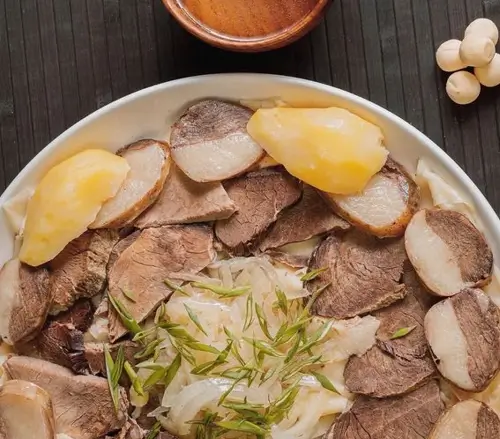
Photo from pinterest.com
Beshbarmak, a traditional dish hailing from Central Asia, particularly popular in Kazakhstan, translates to "five fingers" in Turkic languages, as it's traditionally eaten with one's hands. This hearty and flavorful meal typically features boiled meat served over thin noodles and accompanied by an assortment of vegetables. Follow this authentic recipe to bring the taste of Central Asia to your table.
Ingredients:
2 lbs lamb or beef, cut into chunks
1 onion, chopped
2 carrots, sliced
2 potatoes, cubed
1 lb fresh egg noodles or flat pasta sheets
Salt to taste
Black pepper to taste
Fresh parsley, chopped, for garnish
Vinegar or hot sauce (optional, for serving)
Instructions:
In a large pot, bring water to a boil and add the chunks of meat. Cook until tender, skimming off any foam that rises to the surface. Once the meat is cooked, remove it from the pot and set it aside. Reserve the broth for later use. In another pot, cook the noodles or pasta according to the package instructions until al dente. Drain and set aside. In a skillet, heat some oil and sauté the chopped onion until translucent. Add the sliced carrots and cubed potatoes to the skillet and cook until slightly softened. Return the cooked meat to the skillet and mix well with the vegetables. Season with salt and black pepper to taste. To serve, place a portion of noodles on a plate or platter and top with the meat and vegetable mixture. Garnish with freshly chopped parsley and serve hot, with vinegar or hot sauce on the side if desired.
Serving:
Beshbarmak is traditionally served family-style, with everyone gathered around the table. It's customary to eat it with your hands, using the noodles to scoop up the meat and vegetables.
Beshbarmak is more than just a meal in Central Asia it's a cultural experience that brings people together. With its simple yet flavorful ingredients and communal serving style, this dish embodies the hospitality and warmth of the region.
